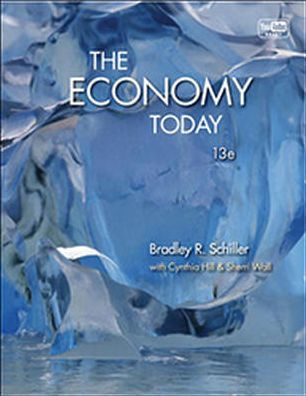Bradley R. Schiller has more than four decades of experience teaching introductory economics at American University, the University of Nevada, the University of California (Berkeley and Santa Cruz), and the University of Maryland. He has given guest lectures at more than 300 colleges ranging from Fresno, California, to Istanbul, Turkey. Dr. Schiller’s unique contribution to teaching is his ability to relate basic principles to current socioeconomic problems, institutions, and public policy decisions. This perspective is evident throughout The Economy Today. Dr. Schiller derives this policy focus from his extensive experience as a Washington consultant. He has been a consultant to most major federal agencies, many congressional committees, political candidates, and presidents. In addition, he has evaluated scores of government programs and helped design others. His studies of poverty, discrimination, training programs, tax reform, pensions, welfare, Social Security, and lifetime wage patterns have appeared in both professional journals and popular media. Dr. Schiller is also a frequent commentator on economic policy for television and radio, and his commentary has appeared in The Wall Street Journal, The Washington Post, The New York Times, and Los Angeles Times, among other major newspapers. Dr. Schiller received his Ph.D. from Harvard and his B.A. degree, with great distinction, from the University of California (Berkeley). On his days off, Dr. Schiller is on the tennis courts, the ski slopes, or the crystal-blue waters of Lake Tahoe.
Karen Gebhardt is a faculty member in the Department of Economics and is the Director of the Online Economics Program at the University of Colorado Boulder. Dr. Gebhardt has a passion for teaching economics. She regularly instructs courses in all modalities (online, on campus, hybrid, remote) from introductory courses in macro- and microeconomics, to upper-division courses in microeconomics, international trade, and managerial economics and graduate courses in environmental economics and public finance. She is an early adopter of teaching with technology and advocates strongly for it because she sees the difference it makes in student engagement and learning. Dr. Gebhardt was the recipient of the Water Pik Excellence in Education Award in 2006 and was awarded the Best Teacher Award in 2015 while she was at Colorado State University. Dr. Gebhardt’s research interests, publications, and presentations involve the economics and online education and the economics of human–wildlife interaction. Before returning to academia, she worked as an economist at the U.S. Department of Agriculture/Animal and Plant Health Inspection Service/Wildlife Services/National Wildlife Research Center, conducting research related to the interactions of humans and wildlife. Her current research focuses on using data to improve student learning outcomes in economics education with an emphasis on improving grades and completion rates in online courses. In her free time, Dr. Gebhardt enjoys learning about new teaching methods that integrate technology and going rock climbing and camping in the Colorado Rockies and beyond.






